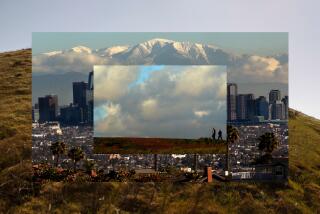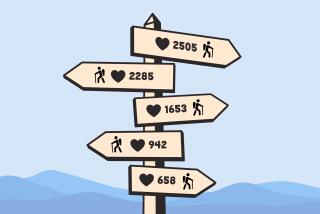For long-distance walks, foot protection is the bottom line
I recently completed a 16-mile city hike on pavement. For the hike, I picked shoes that were comfortable, but by the end of the day I felt like I had bound feet. My toes were rubbing into the shoe uppers. I did, however, wear a great pair of Thorlos socks. Any tips about shoes or other things to consider for long city hikes?
Margaret
Long Beach
There are several things to keep in mind when selecting shoes for long-distance walking, says James Wells, a chiropractor and founder of WellSport, a sports chiropractic center in Newport Beach. Some are obvious, some less so.
“The most important thing you can do is to get into shoes that fit,” he says. This means allowing for enough room, particularly at the toe,” he says. You may even want to go up half a size. One way to test the amount of room in the toe is to stand up on the ball of your feet, then press down on the front of the shoe with your thumb. There should be a minimum of a thumb’s width between the front of the shoe and the big toe.
Wells says there’s a lot of brand-to-brand variation in fit. Try on several brands before settling on one.
You also may want to consider a custom or pre-molded orthotic to improve arch support and limit excessive motion in the foot or ankle, which can result in ankle or knee problems.
“When you’re putting in that type of mileage, 15 to 17 miles, you need to have proper biomechanics in those areas,” Wells says.
Socks are also important. “A lot of times, novice or intermediate runners will use cotton socks or thicker socks,” Wells says, but a thin sock made from the newer microfibers will generally work better. Wells says if you think you need more protection, use two pairs of ultrathin socks rather than one thick pair. Some good brands include DeFeet and Pearl Izumi, which can be found in running and cycling shops.
If you’re having problems with blisters, take a piece of moleskin or comparable product and apply it to hot spots and blister-prone areas, and take some extra along with you on the hike.






